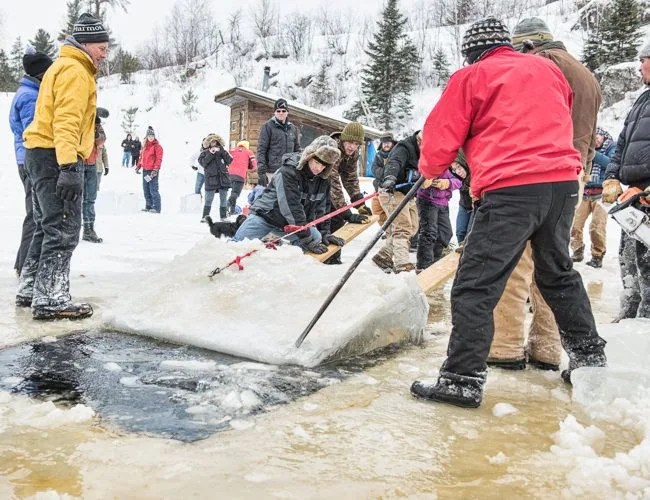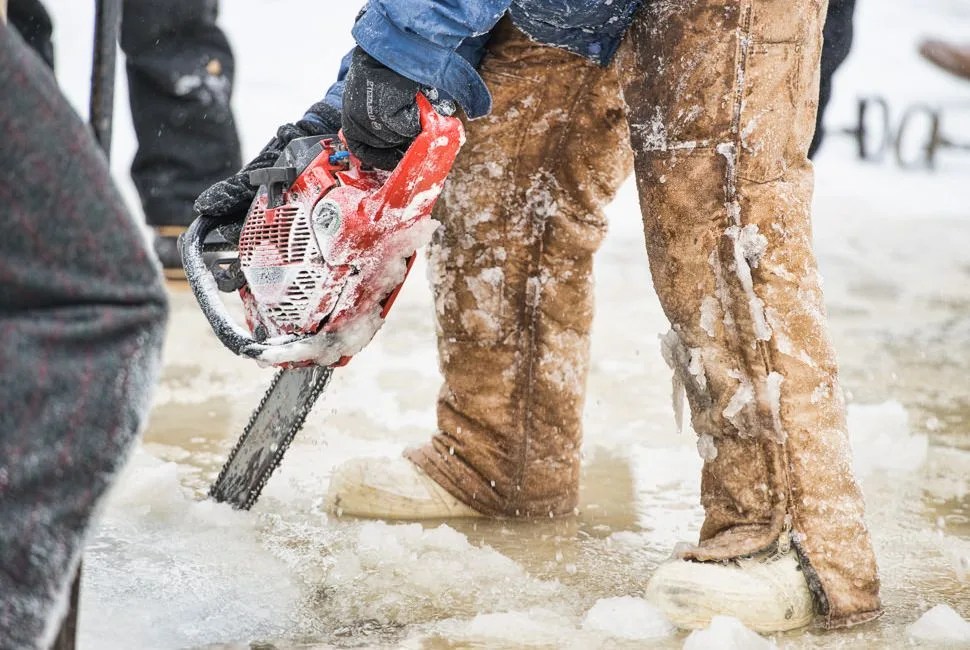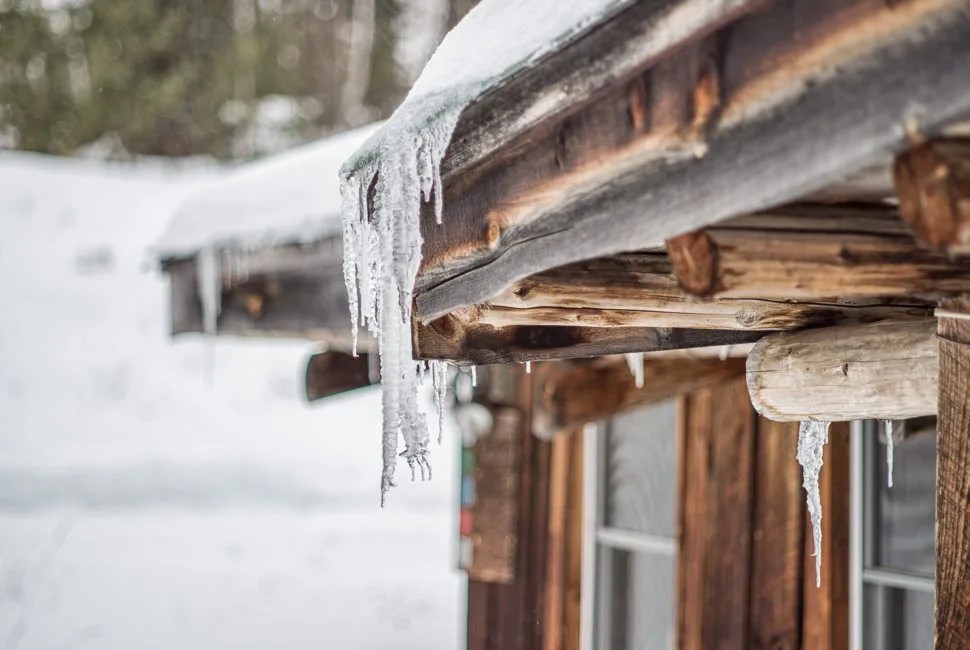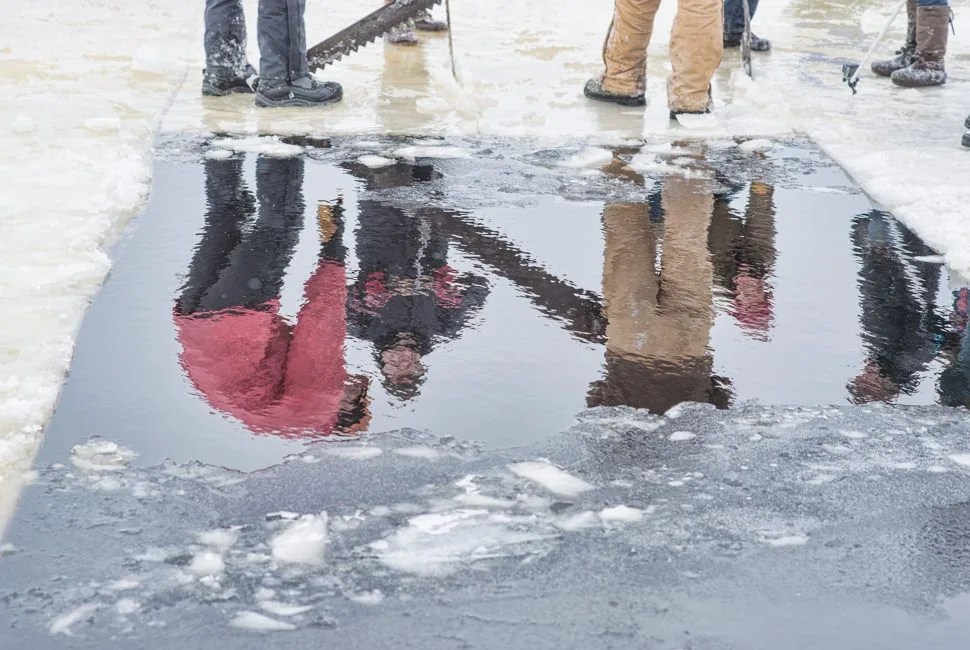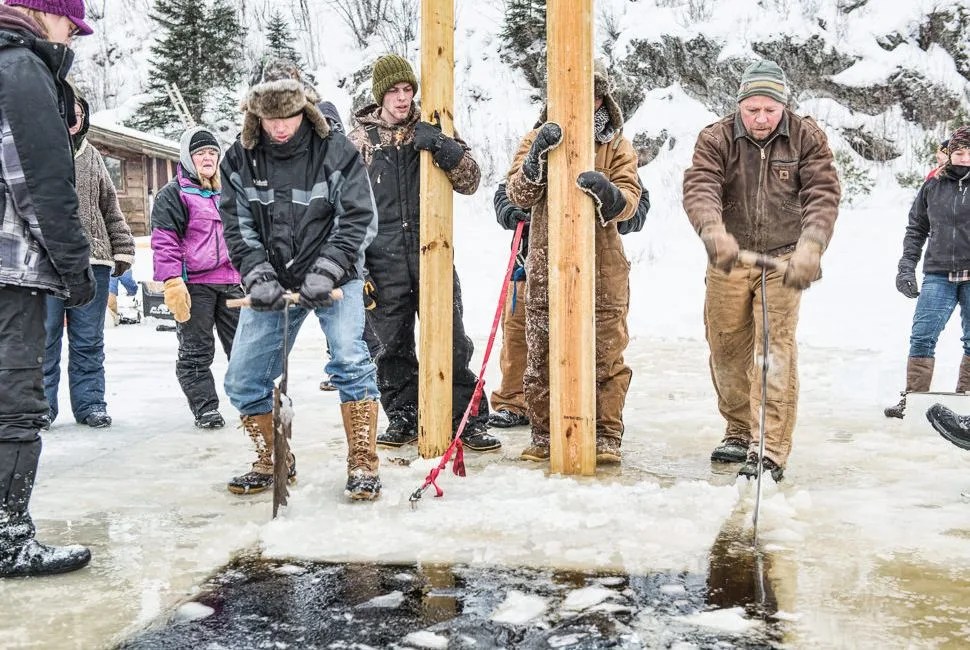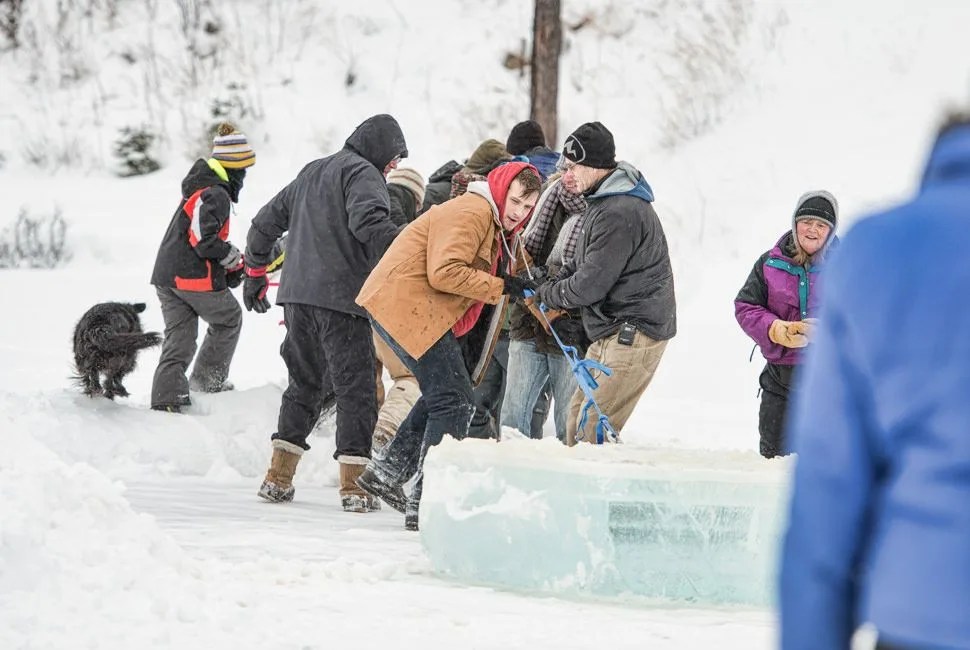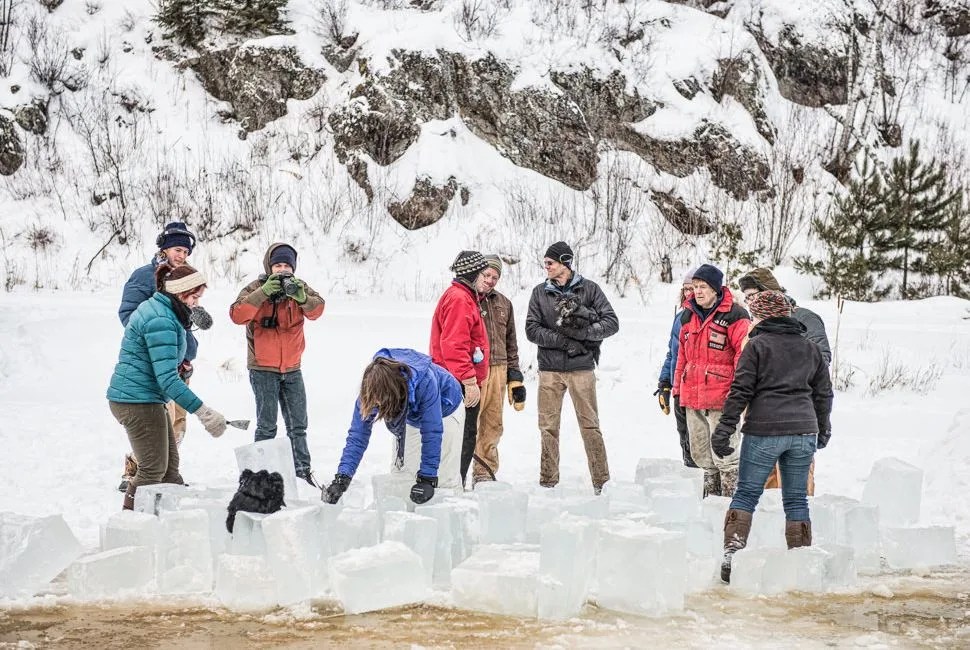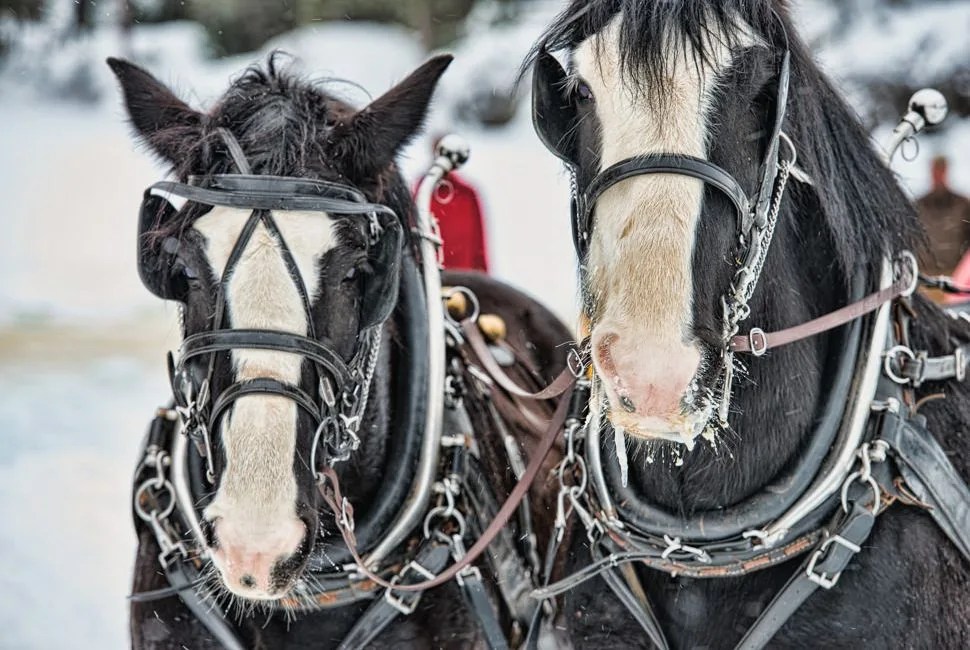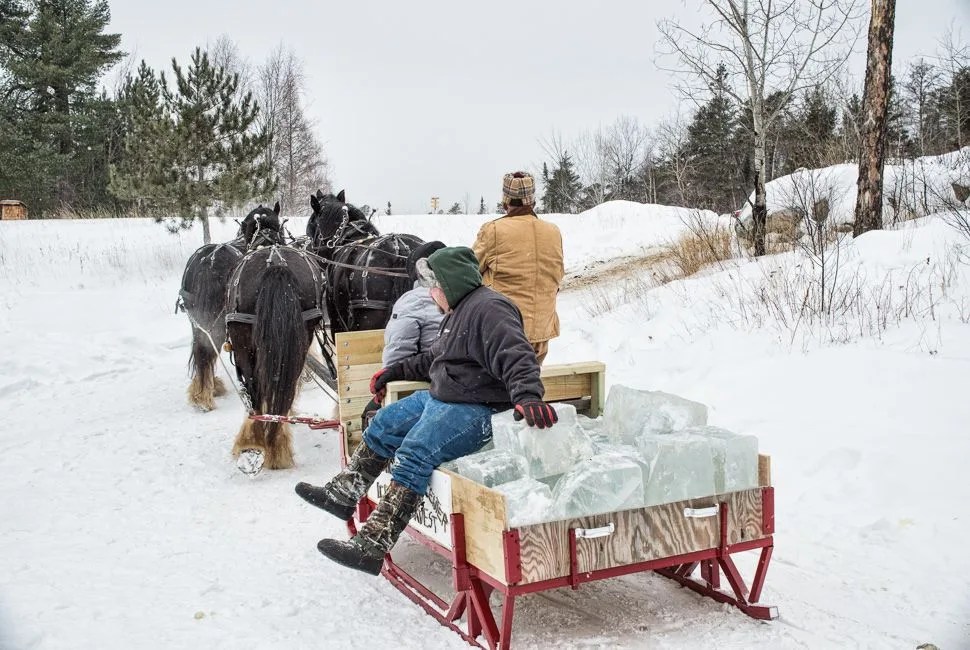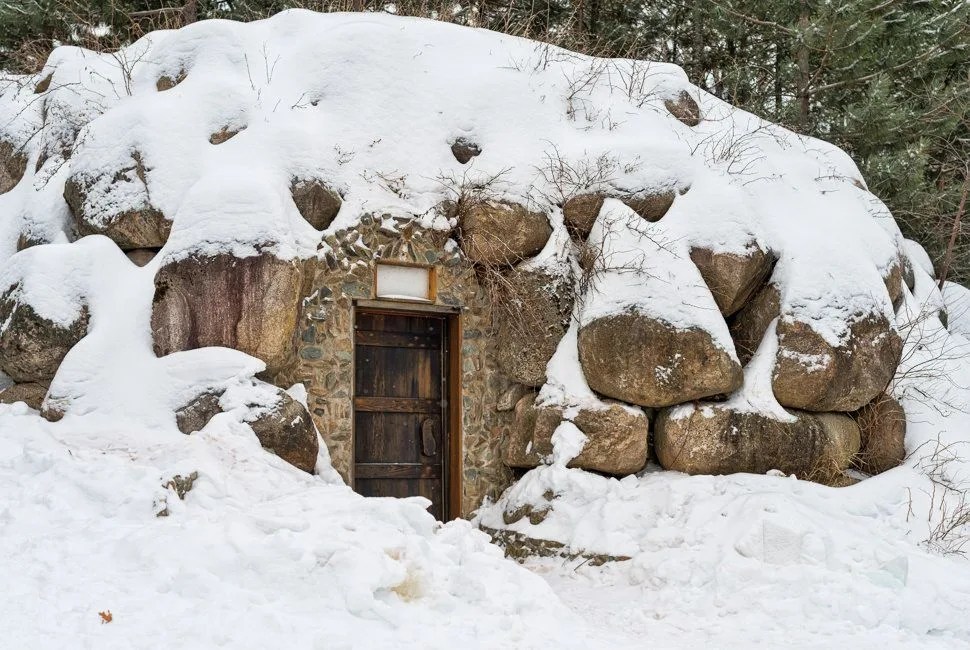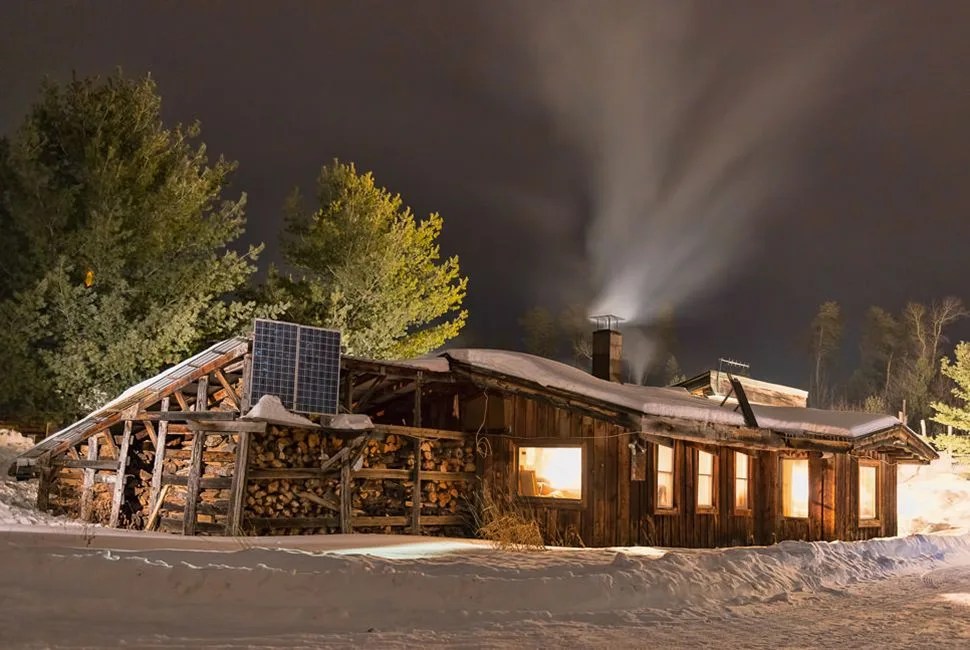15 photos
“Pull!” With a shout from one of the ice cutters, the tug-of-war began. At one end of the rope, a dozen bodies heaved, their boots scrabbling for grip on the slushy surface. At the other end, an ice cube the size of a sofa was a formidable foe. Amidst cries of encouragement and more grunting and straining, the 400-pound ice block reluctantly started to bob in the water. Two men hurried to wedge a pair of wooden boards under it to create a ramp. The sheer willpower of the mob won out finally as the ice slid up and onto the frozen lake surface. Their load suddenly easier, the winning team ran along, chased by the slithering block which was held fast by an ice screw. A cheer went up as the two-foot-thick block, as clear as a diamond, came to a stop. Four huge draft horses, steaming in the cold, looked on indifferently. One snuffled and shook its head as if to say, “Child’s play.”

Ever since he moved to a remote corner of northern Minnesota in the 1960s, polar explorer Will Steger has done this ritual annually. In an effort to stay off the grid and be as self-sufficient as possible, Steger built an underground larder for his food and stocked it each winter with ice cut from the nearby lake. Covered in sawdust and kept dark, the ice provides ample refrigeration for Steger and guests at his so-called “Homestead” all year long. So ample, in fact, that Steger often has to clean out old ice from the preceding winter before he can restock it.
Ice cutting is nothing new, having once been big business from the frozen ponds of New England to the lakes of Michigan. But for Steger, what was once a necessary chore is now a cause for celebration and fellowship. He calls it the Ice Ball. Every February he invites a few dozen close friends to make the trek to his property to help cut and haul ice. Some work the six-foot-long ice saws; others pull the rope while still others cut the slag off the ice to make neat clear stackable blocks. Horses pull sleigh loads from the lake up to the ice house, where the stoutest helpers unload the ice and stack it inside.
Last year’s relatively mild winter made for perfect conditions. At a “mere” two feet thick, the ice released fairly easily from the lake, where it had been forming since November. The day of the Ice Ball dawned cloudy and a tolerable five degrees Fahrenheit with little wind. Volunteers took up their stations, people of all ages and sizes: college students from Minneapolis, old locals and some of Steger’s expedition buddies were all in the mix. Complainers were not allowed.
After a full day of hard work in cold, wet conditions, someone stoked the wood stove in the lodge, a keg of beer and a pot of chili materialized and a local crooner picked up a guitar. People took turns walking to the sauna for a good sweat and scrub followed by an icy plunge into the fresh hole in the lake. The party went into the wee hours until the last of the crowd filtered out to go bed down in sleeping bags in the wood shop next door, exhausted but happy.
